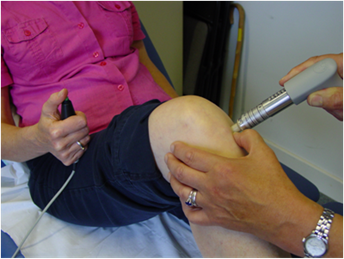In search of better tools to measure pain in people with osteoarthritis
Suokas AK, Walsh DA, McWilliams DF, Condon L, Moreton B, Wylde V, Arendt-Nielsen L, Zhang W. Quantitative sensory testing in painful osteoarthritis: a systematic review and meta-analysis. Osteoarthritis Cartilage 2012, 20(10), 1075-85.
Key findings and importance of study
More accurate tests are needed to explain why osteoarthritis pain affects people differently. We found that Quantitative Sensory Testing (QST) is good at detecting pain disorders in people with osteoarthritis. Finding good techniques such as QST is important because it helps us understand different patterns of pain and match treatments to patients.
Background
QST is a type of test which measures sensation and pain by applying an external stimulus, such as pressure or temperature, to the joint, muscle or tendon until a sensation or pain is felt. QST has been used in musculoskeletal research, but we don’t know how good it is at measuring osteoarthritis pain.

In this picture the examiner is applying pressure stimulus to the knee. When the stimulus begins to feel painful, the individual presses the button and the pressure stops. The level of pressure at that point is the same as the pain threshold.
Aim of the study
We wanted to know how QST has been used in osteoarthritis research so far, and whether it can detect pain disorders in people with osteoarthritis.
How the study was carried out
We looked at 41 research reports published in academic journals to see how QST was carried out; what parts of the body were tested; and whether pain thresholds in people with OA were different from healthy people. A statistical method (called meta-analysis) was used to combine the results from the individual reports.
What the study found
We found that compared with healthy people, people with OA felt more pain when QST pressure was applied. This was the same whether the pressure was applied to the affected joint, or at sites away from the affected area.
This is an important finding as it suggests that OA may increase pain sensitivity not only locally in the affected joint, but also more widely in unexpected areas outside this joint. Increased sensitivity and spread to other areas are associated with the development of chronic pain.
Significance of the study to Pain Centre’s research
The Pain Centre is using QST alongside other clinical tests, psychological pain questionnaires and imaging. We group people with osteoarthritis according to their pain profile, and investigate reasons for differences.